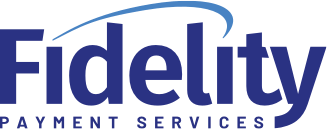Frequently Asked Questions
Opening a New Merchant Account
Here’s what you need to apply for a United States merchant account:
- A U.S. business address
- A U.S. tax ID # (or Social Security number (SSN) if it’s a sole proprietorship)
- A valid business checking account
- An authorized business signer that is a U.S. citizen (with SSN) with a fair credit score
Usually within 2-3 business days. The process of setting up a new merchant account includes getting approved by underwriting, and setting up or reprogramming equipment or software.
When a merchant sells a product or service that they cannot or do not deliver, is delivered poorly, or that is defective in some way, and the business cannot fix the situation with their own financial resources, then the Merchant Account Provider has to bear all the chargebacks, penalties, and losses. Thus, the risks are thoroughly screened and monitored closely.
Businesses with poor credit or no credit are very difficult to set up as the risks are very high. However, we deal with a number of banks that specialize in accommodating these types of high-risk accounts, and each account is considered on an individual basis.
Fidelity Services
Equipment and Technology Solutions
A payment gateway is a virtual terminal that replaces the traditional countertop “credit card terminal” with a fully automated online portal. Cardknox is Fidelity’s proprietary flagship gateway. Give us a call for more information about processing with a gateway.
Processing Credit Card Transactions
Voids and refunds are similar, but there are important differences.
A voided payment must be done on the same day as the original charge, before the batch is closed. The void does not show up on the cardholders’ credit card statement, although it appears as a temporary authorization hold on their account immediately after the transaction.
A refund can be issued any time after the original transaction, even if the batch was settled. A refund is displayed as a credit on the cardholder’s statement.
Most retail “brick-and-mortar” stores and businesses swipe credit cards when the card and cardholder are present. Other businesses, such as mail-order companies, key-in the credit card information without actually seeing the card or the cardholder. For online transactions the cardholder keys-in the transaction information. The difference between these swiped and keyed conditions are the associated risk factors per transaction.
The level of risk determines the merchant’s rates. Swiped transactions have the lowest rates because they are the lowest risk. This is because the customer and the card are present at the time of the charge and the merchant serves as a level of security. Keyed transactions have higher rates because the cardholder is not actually present when their information is entered and the card is charged, therefore there is a higher risk of fraud.
Billing Frequencies
PCI Compliance
Fraud and Chargeback Prevention
To help you prevent credit card fraud, Fidelity offers a wide array of fraud prevention tools, including customizable filters, advanced IP address tools, and automatic email notifications after suspicious transactions. It is important to note that the first step toward preventing credit card fraud is awareness of what you’re up against.
Adjusting For Daylight Savings Time
No. Terminals need to be manually adjusted for Daylight Savings Time twice each year. For instructions on how to do so, click here.
